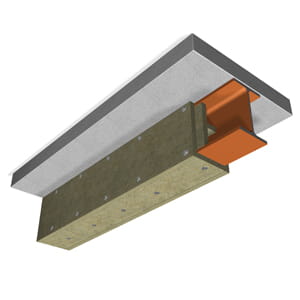Steel structures
Building regulations require certain elements of a structure to have fire resistance. Whether or not an element requires fire resistance depends on the size the building, what it will be used for and what the function of the element is.

When exposed to fire, all commonly used structural materials lose some of their mechanical strength. Heavily loaded steel will lose its designed safety margin at temperature around 550°C – regardless of the grade of steel. To protect the structural steel in your building, use PAROC fire protection slabs. Depending on the application, you can use one of three methods for fire protection: profile, box and solid.
The bigger volume of steel in the exposed area, the better fire resistance it has. How quickly the steel structure heats up in a fire can simply be described as the relation between the surface exposed to the fire and the steel volume of the profile. This relation is called the section factor A/V. A high section factor gives a quick temperature raise of the steel. In practice, this means that thin steel structures demand thicker protection.
Use tables 1 and 2 to find the fire class you need and the required product thickness for the most common steel profiles.